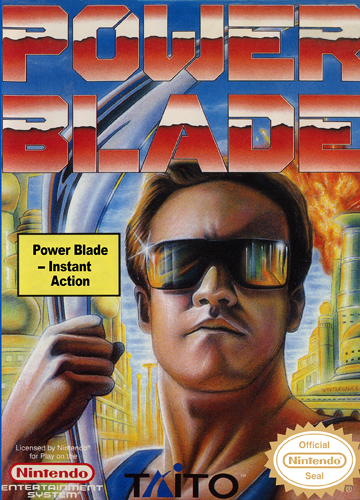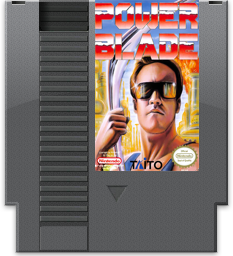

Power Blade, developed by Taito and released for the NES in 1991, is an often overlooked gem in the platforming genre. With its futuristic setting and challenging gameplay, Power Blade offers an immersive experience that captivates players from start to finish. In this review, we'll delve into the game's mechanics, visuals, audio, and overall replayability to uncover why Power Blade deserves a place in the hearts of retro gaming enthusiasts.
Year: 1991
Manufacturer: Taito Corporation
Genre: Platform
Rating: HSRS - GA (General Audience)
Gameplay:
Power Blade features tight, responsive controls that make maneuvering the protagonist, Nova, a joy. As Nova, your mission is to save the world from an army of menacing robots by exploring a series of non-linear levels filled with platforming challenges, enemies, and hidden power-ups. What sets Power Blade apart is Nova's primary weapon, a boomerang-like blade that can be thrown in various directions, adding a strategic layer to combat. The ability to retrieve the blade enhances gameplay depth, requiring precision and timing to defeat enemies and overcome obstacles. While the difficulty ramps up as you progress, the sense of accomplishment when mastering the game's mechanics is incredibly rewarding.
Visuals:
Power Blade boasts impressive visuals for an NES title, with vibrant colors and detailed sprites that bring the futuristic setting to life. The levels are diverse, ranging from industrial factories to high-tech laboratories, each featuring distinct aesthetics and enemy designs. The game's attention to detail is commendable, and the smooth animations contribute to the overall immersive experience. Despite the NES's graphical limitations, Power Blade manages to deliver an aesthetically pleasing and visually engaging world.
Audio:
The game's soundtrack is an absolute standout, composed by Kinuyo Yamashita, best known for her work on the Castlevania series. The energetic tunes perfectly complement the fast-paced action, enhancing the game's intensity and setting the tone for each level. The sound effects, while simple, are effective, and the satisfying "boomerang" sound when the blade hits its target adds a nice touch to the overall audio experience.
Replayability:
Power Blade's non-linear level design and hidden power-ups encourage exploration, adding to the game's replay value. The multiple difficulty settings further extend the longevity, allowing players of all skill levels to enjoy the game. Additionally, the addictive gameplay and the desire to improve one's performance make Power Blade a title that players will revisit time and again.

Conclusion:
Power Blade stands as a testament to the NES era's exceptional platforming titles. With its tight controls, challenging gameplay, stunning visuals, memorable soundtrack, and high replayability, it remains a must-play for retro gaming enthusiasts. Whether you're a fan of classic platformers or a newcomer to the genre, Power Blade offers an immersive experience that stands the test of time. Give it a spin and prepare to be hooked on this forgotten NES gem.
Explore in-depth reviews and analyses of classic Nintendo Entertainment System (NES) games, including gameplay mechanics, graphics, sound, and overall nostalgic experience.